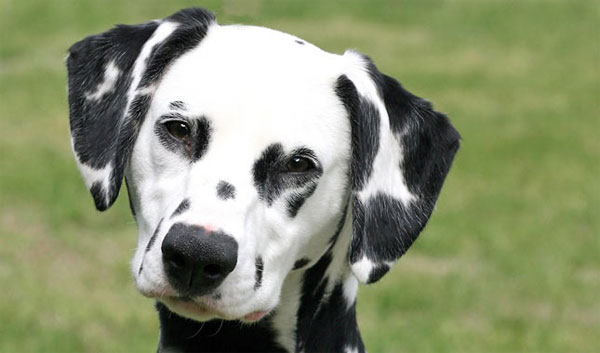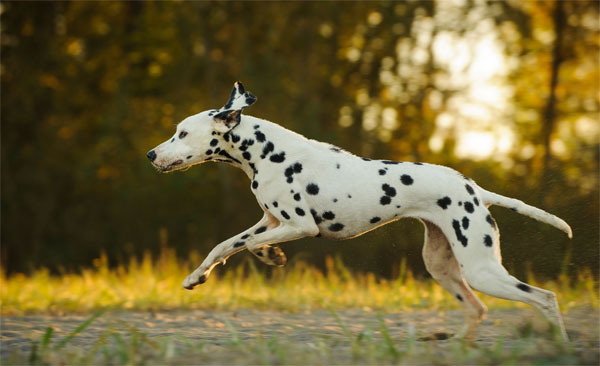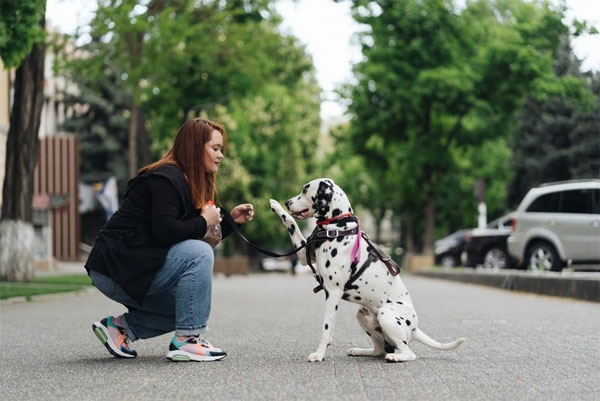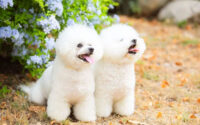Dalmatian characteristics
The Dalmatian, an iconic breed recognized for its unique spotted coat and stellar reputation as the firehouse dog, is more than just a striking appearance. These athletic dogs have a history as rich as their personalities are vibrant. Delving into the characteristics of the Dalmatian reveals a complex animal known for its strong will, high energy, and loving nature. From their mysterious origins to their special quirks and care needs, exploring the world of Dalmatians offers a glimpse into a breed that has captured hearts and imaginations for centuries.
Dalmatians: A Spotted History
Table of Contents

The Dalmatian’s origins are somewhat shrouded in mystery, with their distinctive spots appearing in art and historical documentation across Europe, Asia, and Africa. Named after the Dalmatia region in modern-day Croatia, these dogs have a history that suggests they were used as dogs of war, border guards, and companions to nomads. It was during the 18th century in England that Dalmatians became associated with the carriage trade, running alongside horses to clear a path and guard the occupants against highwaymen. This historical association with horses is integral to understanding the Dalmatian’s endurance and love for running.
Their popularity surged during the 19th century, becoming sought-after as coach dogs, and later, their firehouse legacy began, serving as fire apparatus escorts and mascots for fire stations. Dalmatians were officially recognized by the American Kennel Club in 1888, and their appeal has only grown, especially following the release of Disney’s “101 Dalmatians,” which led to increased interest in the breed. However, the surge also led to irresponsible breeding and overpopulation, prompting a need for potential owners to research and commit to responsible Dalmatian ownership.
Distinctive Coats: More Than Spots

The most defining feature of a Dalmatian is undoubtedly its coat. The black or liver-colored spots are unique to each dog, with no two Dalmatians sporting the same pattern. These spots are not present at birth, as puppies are born pure white, only developing their spots as they mature. Beyond the aesthetic appeal, the Dalmatian’s coat has practical aspects:
- It’s short and dense, providing protection against extreme weather.
- The coat is sleek and glossy when properly cared for, requiring regular brushing to minimize shedding.
- The spots can vary in size and are more pronounced on a purebred Dalmatian, being evenly distributed throughout the body.
Interestingly, Dalmatians can also exhibit “patches,” which are larger areas of dark color present from birth, though these are not preferred in the show ring. The breed standard calls for well-defined spots, balanced in distribution and size. It’s this stunning coat that often draws people to the breed, but future owners must be aware that it’s also a source of genetic health considerations.
Dalmatian’s Unique Personality Traits

Dalmatians are as known for their personalities as they are for their coats. They are highly intelligent and thrive on human companionship, often forming strong bonds with their family members. Here are some standout traits:
- Loyal: They are known to be devoted to their families and can be protective.
- Energetic: They have high energy levels and require plenty of exercise.
- Sociable: With proper socialization, they are friendly and outgoing.
- Sensitive: They can be quite sensitive to their environment and to the emotions of their owners.
- Willful: Dalmatians have a strong-willed nature, which can make training a challenge.
- Clownish: They often display a playful and humorous side, providing entertainment and affection.
These characteristics make Dalmatians fantastic companions, but also mean they require owners who can provide the right balance of discipline, exercise, and love.
Athleticism: Born to Run With Horses

The Dalmatian’s history as a carriage dog has imparted a legacy of athleticism and endurance. These dogs have a robust build and a natural inclination for running long distances. Their stamina and speed are testaments to their historical role:
- They have a smooth and efficient gait, allowing them to keep pace with horses for miles.
- Dalmatians possess a strong, muscular body that is capable of great agility and endurance.
- Their love of activity makes them excellent companions for runners, hikers, and cyclists.
It’s this innate athleticism that requires Dalmatian owners to commit to providing ample daily exercise to keep these dogs physically fit and mentally stimulated. Without sufficient activity, Dalmatians can become restless and display behavioral problems.
Health Considerations for Dalmatians

Like all breeds, Dalmatians come with their own set of health concerns that prospective owners should be aware of:
- Deafness: A significant percentage of Dalmatians are born deaf in one or both ears, which is related to their unique pigmentation.
- Urolithiasis: Dalmatians have a unique urinary system that makes them prone to forming urinary stones.
- Skin allergies: Their short coats can be sensitive, and some may suffer from skin allergies.
Regular veterinary check-ups, a carefully monitored diet, and attention to skin and coat care can help manage these issues. Responsible breeding practices are also crucial to reduce the prevalence of genetic disorders such as deafness.
Training Dalmatians: Tips & Techniques

Training a Dalmatian can be a rewarding challenge, given their intelligent and sometimes stubborn nature. Here are some tips:
- Start Early: Begin training and socialization as early as possible to instill good habits.
- Be Consistent: Consistency is key in training to help Dalmatians understand expectations.
- Positive Reinforcement: Use rewards and praises to encourage good behavior.
- Exercise: Ensure they get plenty of physical activity to burn off excess energy before training sessions.
- Patience: Be patient and firm, as Dalmatians can be sensitive to harsh treatment.
- Variety: Keep training sessions interesting by introducing new tricks and tasks.
With the right approach, Dalmatians can excel in obedience, agility, and other canine sports, showcasing their intelligence and eagerness to please.
Comparison Table: Dalmatian vs. Labrador Retriever
| Aspect | Dalmatian | Labrador Retriever |
|---|---|---|
| Coat | Short with spots | Short, dense, without spots |
| Energy Level | Very high | High |
| Exercise Needs | Extensive daily exercise | Moderate to high daily exercise |
| Training | Can be willful; requires consistency | Eager to please; generally easy to train |
| Health Issues | Deafness, urolithiasis | Hip dysplasia, obesity |
| Temperament | Loyal, protective, energetic | Friendly, outgoing, good-natured |
The Dalmatian is a breed rich in history, with characteristics that are as distinctive as their spotted coats. Their unique combination of athleticism, intelligence, and loyalty makes them a fascinating and rewarding companion for the right owner. While they do come with specific health and training considerations, a well-cared-for Dalmatian can be a delightful addition to any active household. With a commitment to understanding and meeting their needs, the Dalmatian’s spots will find a permanent place in your heart.



